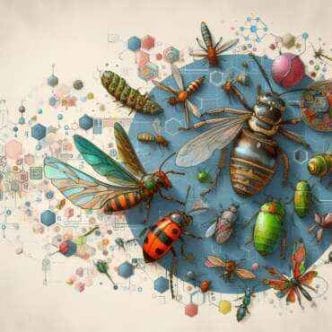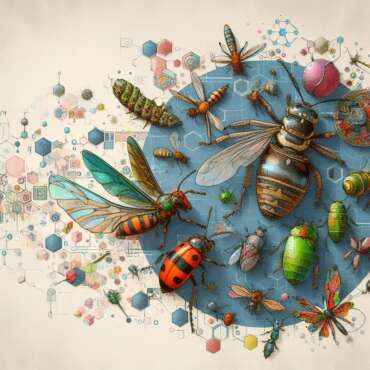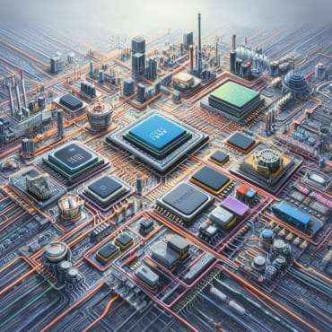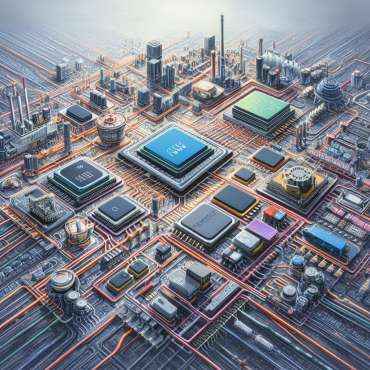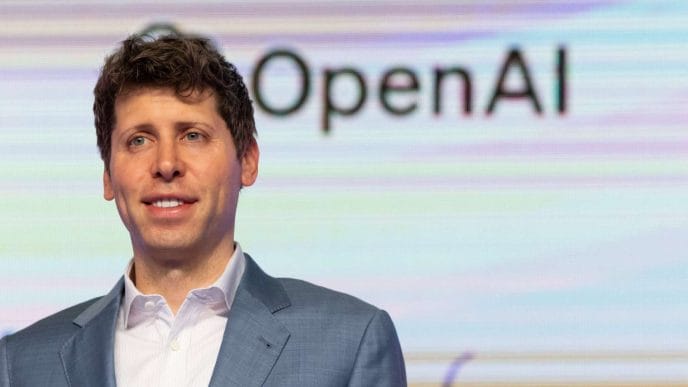We live in the times of smart manufacturing, where machines can think and act seamlessly and autonomously. This is made possible due to the perfect synergy of two powerful forces: Information Technology (IT) and Operational Technology (OT).
What exactly are IT and OT, you may ask. Simply put, IT systems work like the brain, and OT systems work like the body of the manufacturing process. While IT involves computing, networking, and storage technologies, OT is associated with hardware and software solutions that monitor, process, and convey information about and control physical processes. Traditionally, these two domains worked in isolation, holding back the true potential of manufacturing efficiency. The OT seldom has access to the data and analytics by the IT. This stifles efficiency. By breaking down information silos and combining IT and OT, companies can significantly improve their performance, productivity, flexibility, and sustainability.
Industry 4.0, where the powerful fusion of IT and OT is driving a remarkable transformation. This convergence is revolutionizing factories, warehouses, energy grids, buildings, and supply chains, making them smarter and more efficient by leveraging automation, sensors, cloud computing, AI, and IoT technologies. Experts predict that smart manufacturing industry will triple in size this year, skyrocketing from $150 billion in 2017 to $480 billion by 2023, and shape the future of manufacturing.
How Does IT/OT Convergence Work?
The key to combining IT and OT systems in manufacturing is the Industrial Internet of Things or the IIOT infrastructure. It involves technologies like edge devices, wireless networks, and cloud APIs, all working together to gather, send, and process data from industrial equipment. Edge devices collect data from machines and process it to make it relevant. Then, wireless networks send this data to the cloud, where cloud APIs integrate it with IT systems. Additionally, distributed IIoT applications work on both edge devices and the cloud. These applications enable real-time communication between IT and OT systems, ensuring operators can control how data is collected, transmitted, and processed.
Benefits of IT/OT Convergence
While many companies are still in the beginning stages of implementing IIoT equipment and developing an IT/OT convergence strategy, the benefits of IT/OT convergence are already clear. Some of those are:
- Optimizing Processes: Embracing IoT technologies and IT/OT convergence empowers companies to leverage system data, boosting productivity, automating processes, and optimizing business procedures. Businesses achieve significant cost savings and improved efficiency by utilizing OT system data to regulate motor energy usage.
- Mitigating Machine Downtime and Maintenance Costs: IT/OT convergence effectively mitigates machine downtime and maintenance costs. By integrating IoT devices, real-time data is collected, enabling predictive maintenance analysis through IT systems. This approach reduces downtime, and expenses significantly compared to traditional methods, and remote maintenance further enhances efficiency. For example, Bosch’s Digital Twin technology, an AI-powered modeling platform, mimics the physical world of machines by providing a digital dummy. The solution helps manufacturers gain insights, predict potential issues, and make informed decisions to optimize their operations and improve their bottom line.
- Generating New Service Offerings and Revenue Streams: Using the IT/OT convergence, OEMs switch from selling equipment to providing Equipment as a Service (EaaS). Result: less expenditure on fixed capital by businesses and a stable, long-term revenue stream for OEMs.
- Encouraging Innovation: EaaS goods with IT/OT convergence systems can give OEMs insightful data on how consumers use their equipment. This information can inspire innovations to enhance their value proposition and bottom line.
Case Study: ABB’s Advanced Digital Services Transform Global Cement Manufacturing
A leading global cement manufacturer faced critical challenges in enhancing its electrical and process assets’ availability, reliability, and lifecycle. The company also grappled with owning a diverse and fragmented automation landscape, increasing costs. In response to these challenges, ABB, a technology solutions provider, offered its ABB Ability™ Advanced Digital Services. The goal was to implement a comprehensive plantwide approach, maximizing automation usage and minimizing waste. ABB integrated quality and business systems, enabling seamless data collection to inform critical business decisions.
The result? Standard quality deviation reduced by 15%, significantly improving product consistency and customer satisfaction. Furthermore, operating costs were efficiently reduced by 3-5% across all deployed sites, enhancing overall profitability.
Reimagining Manufacturing through IT/OT convergence
Achieving successful IT-OT integration is crucial to establishing a truly interconnected, dynamic, and adaptable Smart Manufacturing enterprise. Without this crucial integration, manufacturers risk being left behind in a highly connected manufacturing ecosystem, limiting their ability to compete and thrive.
Though this transition may seem daunting, taking small steps and implementing changes incrementally can help companies develop a system that works best for them while also increasing their bottom line—allowing them to remain at the forefront of their industry. Wisely integrating IT/OT is key for manufacturing companies planning on surviving in an increasingly complex market landscape.
____________
Written By: Poorva Sagar



